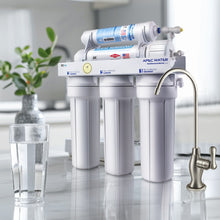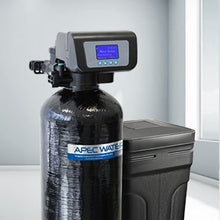New Age of Invisible Contaminants
Traditionally, tap water was considered safe to drink, however; recent findings of PFAs (“forever chemicals”) and microplastics have changed how we think of tap water.
Currently, we know that microplastics and PFAs are in most water supplies.
Additionally, many popular pitcher brands or refrigerator water filter units often leave trance amounts of these invisible pollutants.
For consumers who wish to remove these contaminants, a Reverse Osmosis water filtration system is one of the most commonly used solutions.
Flaws in Basic Filters
Household filters, such as popular pitcher brands, usually uses Activated Carbon filters to improve taste, odor, and remove chlorine.
Activated carbon is a great way to filter water, however; the pores for activated carbon is typically 0.5 to 1 micron in size. This means, while activated carbon filters are great at removing larger particles and absorbing harmful chemicals, their pore sizes are not fine enough to block microplastics or PFAs which could be as small as 0.1 microns.
-
A carbon filter is like a fishing net catching gravel but letting sand pass through.
-
A Reverse Osmosis membrane is like a molecular sieve are usually fine enough to trap the smallest impurities and only allow water molecules through.
Science of the “Guarantee”
Physics is what makes Reverse Osmosis filters the gold standard for contaminant removal.
At the heart of an RO system is a semi-permeable membrane with pore openings around 0.0001 microns. That’s 1,000 times smaller than a bacterium and hundreds of times smaller than the smallest microplastic fragments or PFA molecules.
When water is forced through this membrane under pressure:
-
Pure water molecules pass through.
-
Dissolved salts, chemicals, microplastics, and PFAs are physically rejected and flushed down the drain.
This molecular separation does not depend on chemical binding or absorption, it is a physical separation of unwanted molecules from your home's water.
This is why a Reverse Osmosis filtration process can guarantee the removal of both PFAs and microplastics in your drinking water.
PFA & Microplastic Challenge
Why are PFAs and microplastics are so difficult to remove?
PFAs are synthetic compounds used to create many modern products from nonstock cookware to waterproof fabrics. PFAs are forever chemicals.
Once dissolved PFAs act like tiny molecular chains and are typically too small to remove for many filters.
Microplastics are tiny fragments of plastic that is shed from packaging, clothing fibers, and larder debris. These microplastics range from small specs down to particles that can end human cell membranes.
Municipal water treatment plants are not designed to remove these types of small particles.
So, PFAs and microplastics represent two fundamentally different filtration challenges; one is more chemical and one is more physical.
Reverse Osmosis is unique because it addresses both problems simultaneously:
-
Reverse Osmosis rejects dissolved PFAs through molecular exclusion.
-
Reverse Osmosis blocks microplastics through ultra-fine pore size.
If you are interested in learning more about APEC's Reverse Osmosis solutions: Click Here
Why RO is the Only True Guarantee
Only Reverse Osmosis provides verifiable physics based purification that can target the chemical and physical requirements to remove PFAs and microplastics from water.
Proper Reverse Osmosis filtration is measurable by data and NSF/ANSI testing. Technology that meets the standards of proper filtration.
For homeowners concerned about filtering microplastics and PFAs, a Reverse Osmosis system is the best decision.
FAQs
Q: What percentage of microplastics does Reverse Osmosis remove?
Studies show that RO membranes remove over 99% of microplastics, including the smallest particles down to submicron levels — far beyond the reach of carbon or sediment filters.
Q: Can PFAs and forever chemicals pass through the RO membrane?
No. PFAs are too large at a molecular level to pass through the 0.0001-micron RO membrane pores. Most are physically rejected and flushed out during the filtration process.
Q: Is NSF certification necessary for PFA removal?
While not mandatory, NSF/ANSI 58 certification ensures that an RO system has been independently tested and verified for contaminant reduction claims.
Q: Does my refrigerator or pitcher filter offer the same protection as RO?
No. These filters use basic activated carbon media, which cannot block PFAs or the smallest microplastics. They’re useful for improving taste but not for guaranteed purification.



